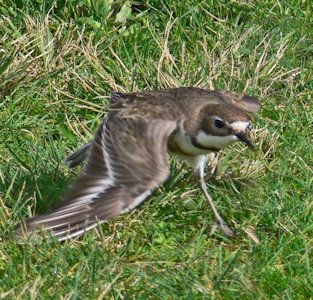
|
Bird's Patterns of Chick Development -- Page 5 Many precocial waterfowl chicks are even better equipped to avoid predators because they can swim almost from birth. Everyone has seen baby songbirds in the nest with eyes closed and mouths open. The adults of common backyard birds have to feed their young. Ducklings and goslings, on the other hand, hatch with their eyes open and already have feathers because they will soon have to feed themselves. Remarkably, young waterfowl spend only about a day in the nest. Precocial chicks' ability to care for themselves lessons the burden on parents, permitting single parenting to be more successful and more prevalent among these species. In many shorebirds one adult leaves the nesting grounds before the chicks fledge; in some the second adult may even depart when chicks are barely able to fly. In species such as Pectoral, White-rumped, or Baird's Sandpipers, the parents depart from arctic nesting areas in July and August, headed for wintering areas in southern South America. Their barely grown chicks are left behind to fend for themselves while they continue to feed for a few more weeks to build up their stores of fat. Before the early arctic winter appears, these four- to six-week-old birds begin the same several-thousand-mile flight for themselves, with no adults to guide them. It sounds impossible, but it works every year. |
| Banded Dotteral Broken Wing Display | |
| ⇦ Back to Chick Development - Page 4 Return to Bird Nesting Choices On to Chick Development - Page 1 ⇨ | |